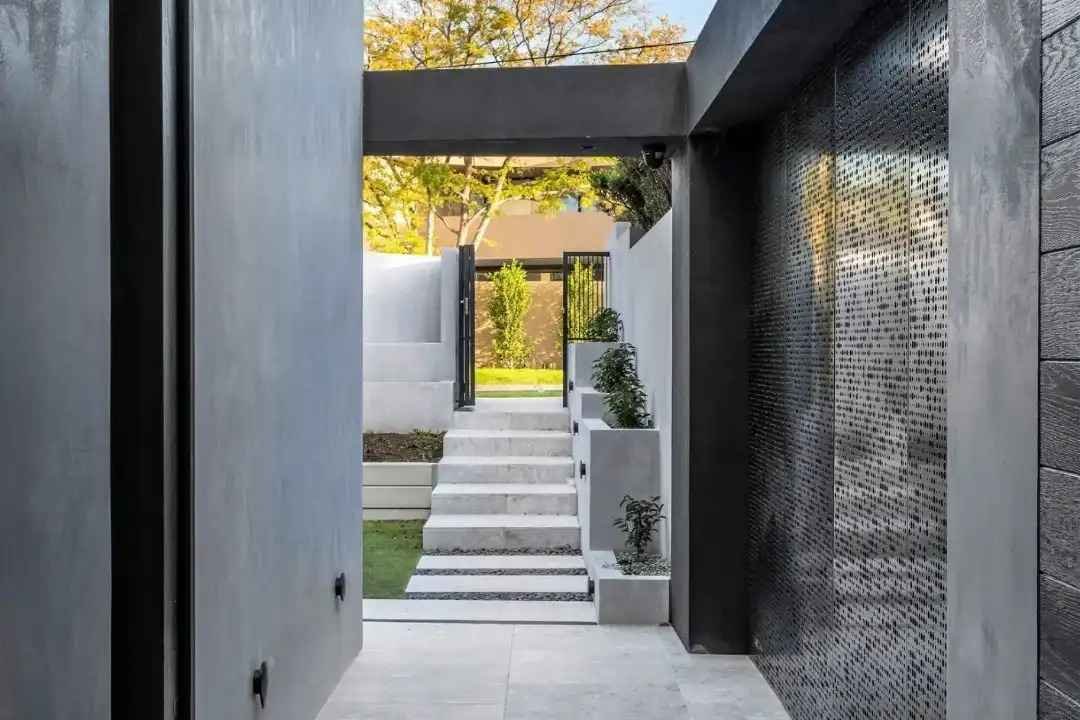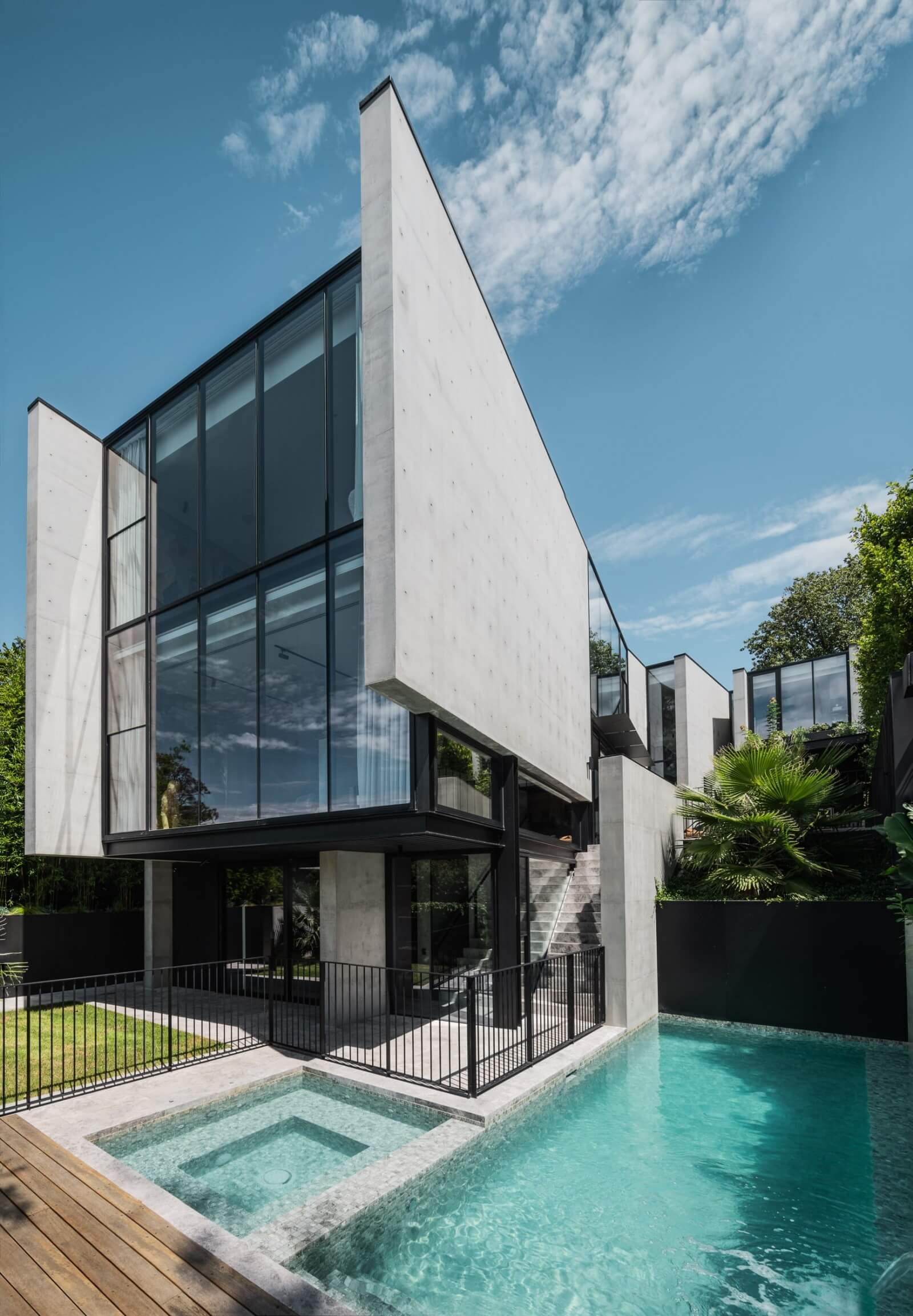Find the Best Residential Architects for Modern and Sustainable Home Designs
Wiki Article
Leading Trends in Residential Design You Should Learn About
As residential design remains to evolve, several compelling patterns are shaping the means we create and occupy our living areas. Key advancements such as lasting structure techniques, the combination of wise home technology, and the rise of modular homes highlight a significant change towards both performance and ecological duty. In addition, ideas like open plan living and biophilic style are redefining our communication with space and nature. Understanding these fads not only notifies design options but likewise discloses wider effects for way of living and area - residential house architect. What might these innovations suggest for the future of property living?
Sustainable Building Practices
An enhancing variety of household jobs are embracing sustainable building techniques, driven by an expanding awareness of ecological effect and power efficiency. This change is defined by the assimilation of eco-friendly products, energy-efficient layouts, and cutting-edge building techniques. House owners and home builders are increasingly focusing on using renewable energies, such as bamboo and recycled metals, which not just minimize the carbon footprint but additionally improve the toughness and aesthetic appeal of homes.Incorporating energy-efficient systems is an additional important element of lasting structure - residential house architect. Features such as high-performance insulation, energy-efficient home windows, and solar panels are coming to be requirement in new household styles. These components not only add to reduced energy usage but additionally offer considerable long-term financial savings for property owners
Moreover, the design of lasting homes often stresses natural light and air flow, reducing the dependence on artificial illumination and environment control systems. Landscaping techniques, such as xeriscaping, further advertise sustainability by decreasing water usage.
As the need for sustainable living services remains to rise, the property architecture industry is positioned to adjust and introduce, guaranteeing that future homes are not just eco accountable however functional and likewise comfy for their occupants. - residential house architect
Smart Home Innovation
Smart home innovation is revolutionizing the way house owners connect with their space, improving comfort, power, and protection management. This ingenious method integrates different gadgets and systems, enabling individuals to manage their homes from another location or with automated procedures. Central to this pattern is using wise gadgets such as thermostats, illumination, safety and security cams, and home appliances, all linked through the Web of Things (IoT)One of one of the most enticing attributes of wise home innovation is the capability to customize settings for optimum power performance. Home owners can check power usage and adjust air conditioning, illumination, and heating based upon their regimens, considerably reducing energy expenses. Additionally, advanced safety systems geared up with smart locks and security video cameras provide comfort, allowing remote monitoring and informs to potential protection breaches.
Combination with voice-activated aides enhances customer experience, allowing house owners to control gadgets with straightforward voice commands. As innovation remains to evolve, the possibility for smart home systems to improve quality of life expands, making them a crucial consideration in modern-day residential design. Inevitably, smart home innovation is not simply a fad but an essential change towards more intelligent living atmospheres.
Open Principle Living
Open concept living has arised as a specifying attribute in contemporary domestic design, defined by the removal of typical obstacles between rooms. This design approach promotes fluidity and connectivity within the home, enabling a smooth transition in between locations such as the kitchen, dining, and living rooms. By getting rid of wall surfaces and dividers, open principle formats develop a feeling of space, cultivating a welcoming ambience that boosts social communication.
Furthermore, this approach to household design aligns with minimalism, concentrating on useful simplicity and aesthetic coherence. Property owners appreciate the convenience of these designs, which can be easily adapted to reflect personal design with furniture arrangement from this source and style. As open principle living remains to get traction, it stays a testament to developing family members dynamics and the wish for homes that boost connection and comfort.
Biophilic Layout
Biophilic design has come to be increasingly considerable in household design, emphasizing the intrinsic connection between people and nature. This design approach looks for to integrate all-natural aspects right into living spaces, thereby fostering a feeling of wellness and enhancing the high quality of life for owners. By incorporating features such as natural light, plants, and natural products, biophilic layout advertises an unified relationship between indoor environments and the environment.Secret aspects of biophilic style consist of big home windows that supply unhampered sights of exterior landscapes, living wall surfaces visit this site right here that present plant right into insides, and open flooring plans that motivate air flow and natural light penetration. Water features, both inside and outside the home, serve to create soothing ambiences and enhance sensory experiences.
Additionally, making use of sustainable materials not just sustains ecological stewardship however likewise contributes to healthier interior air top quality. As recognition of ecological problems increases, homeowners are increasingly focusing on layouts that show their connection to nature. In essence, biophilic layout not just raises aesthetic allure yet likewise addresses psychological and mental requirements, making it a vital fad in modern domestic architecture.
Modular and Prefab Residences

Moreover, modular and prefab homes are designed with sustainability in mind. Numerous producers use energy-efficient systems and environment-friendly materials, such as solar panels and advanced insulation techniques, contributing to reduced power intake and reduced energy expenses for homeowners. The versatility of style options permits customization, accommodating varied useful demands and aesthetic choices.
As the need for budget friendly real estate continues to rise, prefab and modular homes provide a practical solution, resolving both financial and environmental challenges. Areas are progressively recognizing the possibility of these structures, integrating them right into country and urban setups. In general, the trend towards modular and prefab homes indicates a shift towards a lot more sustainable, efficient, and adaptable living environments, making them a critical aspect of modern household design.
Conclusion
Sustainable building techniques and smart home innovations improve efficiency and comfort, while open concept living and biophilic style foster social interaction and a connection to nature. The surge of prefab and modular homes offers adjustable and economical services, showing a broader shift in the direction of functional and accountable living.Key advancements such as lasting building techniques, the assimilation of clever home technology, and the surge of modular homes underscore a significant change towards both performance and environmental responsibility.The rise of modular and prefab homes has changed the property design landscape, offering ingenious solutions for effective and lasting living.Furthermore, modular and prefab homes are developed with sustainability in mind. Overall, the trend toward modular and prefab homes signifies a shift towards extra lasting, effective, you can look here and versatile living environments, making them a critical element of modern property architecture.
Lasting structure techniques and wise home innovations enhance performance and comfort, while open concept living and biophilic layout foster social interaction and a link to nature.
Report this wiki page